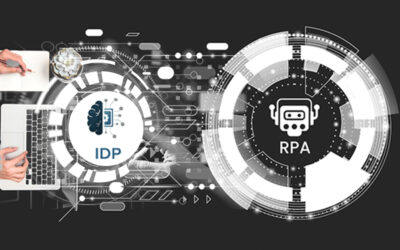The banking industry is undergoing massive digital transformation. Driven by several factors like improved customer experiences, new technology-aided processes, new service delivery channels and fierce competition, the digital transformation initiatives are shifting their primary focus from products and processes to individual customer requirements. As banks deal with a huge volume of data on a day-to-day basis, efficient data management is a crucial aspect to improve their processes and for this, banks utilize professional data entry services. However, the ongoing digital transformation in the banking sector has caused the industry’s potential attack surface to grow, exposing organizations to increased levels of cyber threat activity. Cyber-attacks hold critical value for banking and other financial institutions as they deal in millions of transactions on a daily basis, most of which are performed via digital payment transfer platforms. Therefore, having an effective cyber security program has become more important than ever before. Having a clear understanding about the prominent threat trends that pose a greater risk to banks and financial institutions is one of the top aspects that can lead to the success of these programs. Analyzing the latest threat trends will help build more informed security strategies that accurately assess a bank’s cyber health. By adopting programs that effectively monitor security position can help a banking institution embrace digital transformation without compromising security or compliance.
An Overview of Cyber Threats in the Banking Industry
As banks deal with a huge volume of financial data, cyber criminals are increasingly targeting customer banking credentials when carrying out attacks. With the introduction of several mobile banking applications, cyber criminals have more space to intrude into the network. Banking apps are difficult to secure as these can be exploited from both the client-side and the server-side. In short, banking institutions must be able to ensure whether their sensitive data is secure when it is being accessed from a customer device as well as when it is stored on bank servers. On the other hand, cyber criminals will also try to target the bank’s third-party vendors (software vendors, banking equipment vendors, customer service vendors) – who have access to critical banking data, but often lack stringent security policies. Therefore, it is extremely important for banks to continuously monitor cyber security measures as this can save them from reputational damage and financial loss.
Here discussed are the top threats to a bank’s cyber security –
- Malware – Malware is a considerable threat to the banking sector. Malware infecting vulnerable end-user devices (such as computers and cell phones) can pose a risk to a bank’s cyber security each time they connect with the network. Sensitive data passes through these connections and if the end user device has malware installed on it, without proper security, that malware could attack the bank’s networks. Cybercriminals are able to gain access to entire banking networks and steal critical user data. As malware attacks are becoming very common, it is essential that banks work with their security teams to ensure that both customer and employee devices cannot be compromised.
- Data Manipulation – A common misconception about cyber-attacks is that they are only concerned with data theft. However, that is not always the case. In certain cases, hackers don’t go in to steal data; rather they simply go in to change it. Data manipulation attacks have become an increasingly popular means of attack for cybercriminals. Unfortunately, this type of attack can be difficult to detect right away and can cause financial institutions to incur millions of dollars in damages. Data manipulation attacks occur when cyber criminals gain access to a target system and make undetected changes to data for their own personal gain. As manipulated data does not look any different from normal data, it can be quite difficult or challenging to identify what has and hasn’t been altered. Data manipulation is dangerous, particularly in the banking sector as this can result in non-compliance with data standards and lead to substantial fines.
- Social Engineering – When compared to traditional hacking methods, social engineering attacks exploit human behavior to gain access to company servers. Social engineers can manipulate employees into sharing login credentials or other sensitive information. In the banking sector, the most common social engineering attack is phishing. Phishing attacks are communications like emails, calls, or texts, which replicate company officials to trick employees into sharing information. These also include misleading links to take employees to websites that are infected with malware. As customers are often targeted in phishing attacks, it is essential to educate them about cyber security best practices via a security awareness newsletter or email.
- Unencrypted Data – All data stored online on computers in financial institutions should be encrypted. Encrypted data, if stolen by hackers, cannot be immediately used. On the other hand, if left unencrypted, hackers can use the data right away, creating serious problems for banks.
- Spoofing – Spoofing is a type of cyber-attack wherein hackers will find a way to impersonate a banking website’s URL with another website that looks and functions exactly in the same way as the original website. When a user enters his or her login information, that information is stolen by hackers to be used later. The latest spoofing techniques do not use a slightly different but similar URL – they are able to target users who visited the correct URL.
Top Ways to Ensure Cyber Security in Banks
To remain protected against emerging threat trends, it is important for banking institutions to collaborate with their IT teams to establish strong security protocols. Here discussed are four ways to strengthen cyber security protocols within the banking sector –
- Cyber Risk Assessment – Conducting a detailed cyber-risk assessment helps banks identify and manage vulnerabilities within their network environment in advance. By evaluating the potential risk factors that pose the greatest threat to a bank’s financial business, you can prioritize remediation efforts and reorganize threat mitigation. This allows banks to proactively protect against data breaches while reducing costs and labor hours in the long run.
- Multi-factor Authentication (MFA) – MFA is an absolute necessity for financial organizations as it adds an additional layer of security when attempting to access valuable information. In simple terms, MFA is an authentication method in which access is only granted once a user presents two or more login credentials like passwords, pins, or fingerprints. When setting up MFA, make sure that login credentials do not come from the same source (i.e. two passwords) as this will weaken the security aspect.
- Cyber Insurance – Regarded as an important component of a cyber-security strategy, cyber insurance helps financial businesses to remain protected in the event of a data breach. Apart from covering legal expenses, cyber insurance carriers also notify customers of breaches so that organizations are in compliance with data breach regulations. In addition, cyber insurance will also help pay to fix damaged systems and restore compromised data.
- Employee Training – To make security programs more effective, it is essential to train banking employees on cyber hygiene best practices. When employees are trained to use cyber security systems properly, they can actively identify available or possible vulnerabilities within their systems and make sure they are resolved.
The banking sector will always be a target for cybercriminals looking to compromise systems for financial gain. Cyber threats range from phishing emails, spoofing to hijacking websites. For banking institutions to actively protect against threats, they need visibility into their cyber security ecosystems. It is vital for banking organizations to have risk management programs in place to handle security incidents and breaches. This will in turn help build a culture of security concern, determine potential exposure and manage risk appropriately. This concern for security should be foremost when partnering with external agencies such as business process outsourcing companies. Implementing proper data and effective security measures will help banks improve security, prevent cyberattacks, and avoid costly data breaches.




